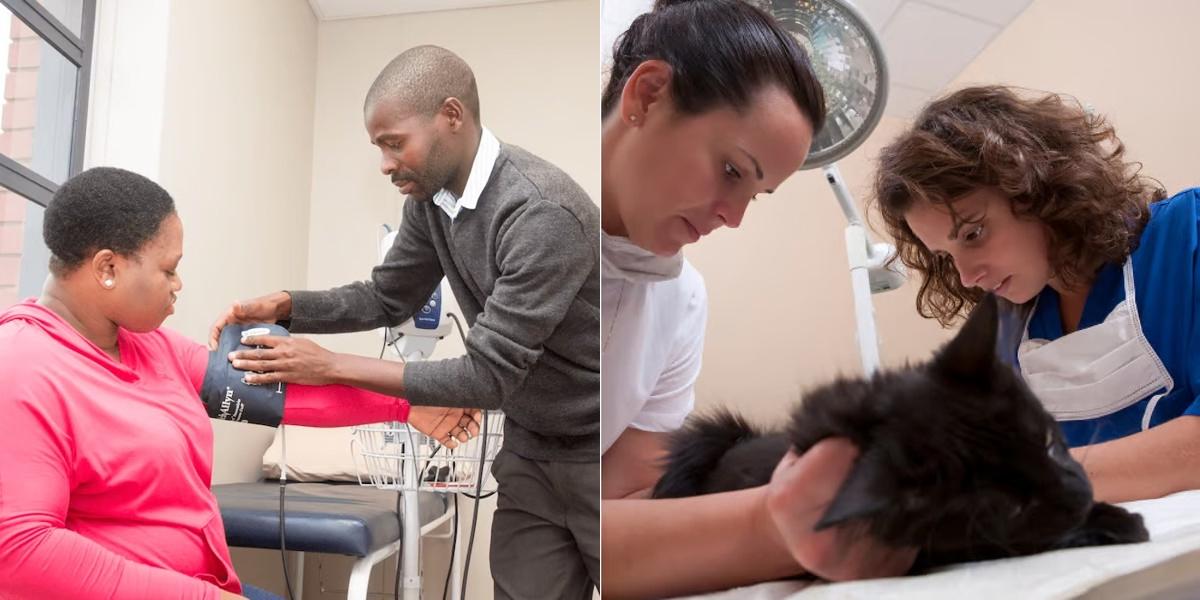Medical Assistant vs Veterinary Assistant

If you're considering a career in healthcare but are unsure whether to work with humans or animals, two prominent options are Medical Assistant (MA) and Veterinary Assistant (VA). Both roles support healthcare professionals but differ significantly in responsibilities, training, and work environments. This guide will help you compare these careers to make an informed decision.
Veterinary Assistant Training Path
- Education: High school diploma or equivalent; some complete a veterinary assistant certificate program
- Program Length: Certificate programs usually take less than a year
- Certification: Not typically required but can enhance job prospects; the Approved Veterinary Assistant (AVA) designation is available
MA vs. VA: Pay & Job Outlook
According to the U.S. Bureau of Labor Statistics (BLS):
Medical Assistant
- Median Annual Wage (May 2023): ~$42,000
- Projected Growth (2023–2033): ~15% (much faster than average)
Source
Veterinary Assistant
- Median Annual Wage (May 2023): ~$36,440
- Projected Growth (2023–2033): ~19% (much faster than average)
Source
MA vs. VA: Which One Should You Pick?
Choose Medical Assistant If…
- You're interested in human healthcare
- You seek a role with higher earning potential
- You prefer a mix of clinical and administrative duties
Choose Veterinary Assistant If…
- You have a passion for working with animals
- You're comfortable with the physical demands of animal care
- You desire a role focused primarily on clinical tasks
Conclusion
Both Medical Assistants and Veterinary Assistants play crucial roles in supporting healthcare professionals and ensuring quality care for patients—whether human or animal. Your decision should align with your interests, strengths, and career aspirations.
Explore Training Options
Dreambound's educational programs open doors to exciting opportunities. For more details, check out:

Joanna Paragas is part of the Growth team at Dreambound. Her primary role involves creating various automation to streamline workflows and make tasks more efficient for the entire team. Beyond her professional endeavors, Joanna enjoys spending her free time playing with her dogs and enhancing her knowledge by enrolling in online courses.




